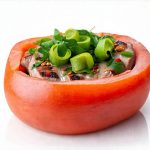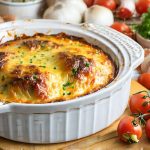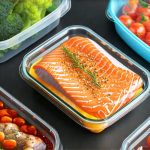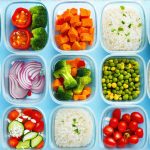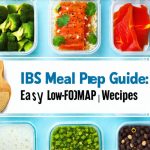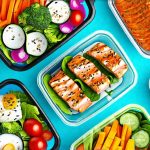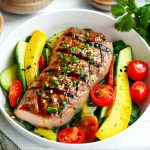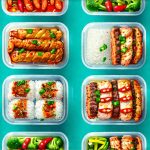Gastroesophageal reflux disease (GERD) impacts millions, often requiring significant dietary adjustments alongside medication or lifestyle changes. Many individuals find that managing GERD extends beyond simply knowing trigger foods; it’s about consistently preparing meals that minimize symptoms and are convenient enough to maintain long-term adherence. This is where meal prepping comes in – but not just any meal prep. GERD-friendly meal prep requires careful consideration of ingredients, cooking methods, portion sizes, and even reheating techniques to avoid exacerbating acid reflux. Successfully navigating this can feel daunting, so this guide aims to simplify the process, equipping you with practical strategies and delicious, reheat-friendly recipes designed for a comfortable and symptom-managed lifestyle.
The challenge isn’t necessarily about eliminating entire food groups (though some individuals will have specific sensitivities), but rather creating balanced meals that are low in acidity, fat, and potential irritants while still being enjoyable and satisfying. A successful GERD meal prep strategy prioritizes lean proteins, non-citrus fruits, whole grains, and vegetables prepared using gentle cooking methods like baking, steaming, or grilling. Importantly, it also considers how these meals will reheat without losing nutritional value or increasing reflux triggers. We’ll focus on building a sustainable system that integrates seamlessly into your busy life, offering both convenience and relief. You might find meal prep containers that help with portion control helpful in this process.
Understanding GERD & Dietary Triggers
GERD occurs when stomach acid frequently flows back into the esophagus, irritating its lining. While individual sensitivities vary widely, certain foods are commonly associated with increased reflux symptoms. These include: – Fatty or fried foods – Citrus fruits and juices – Tomatoes and tomato-based products – Chocolate – Mint – Spicy foods – Carbonated beverages – Caffeine – Alcohol Understanding your personal triggers is crucial. Keeping a food diary can help identify which foods consistently lead to discomfort, allowing you to tailor your meal prep accordingly. However, it’s important to remember that correlation doesn’t equal causation and consulting with a healthcare professional or registered dietitian for personalized guidance is always recommended. Consider exploring daily microbiome-friendly recipes tailored to digestive health.
Beyond specific foods, the way we eat also plays a role. Large meals can put pressure on the lower esophageal sphincter (LES), increasing the risk of reflux. Eating quickly, lying down immediately after eating, and being overweight are also contributing factors. Meal prepping helps manage portion sizes and encourages mindful eating habits, reducing these risks. It’s about creating a system that supports overall digestive health and minimizes the potential for discomfort. A well-planned meal prep strategy can empower you to take control of your diet and proactively manage your GERD symptoms. If chronic reflux is an issue, strategies for long-term meal planning are essential.
Building Your GERD-Friendly Meal Prep System
Successful meal prepping begins with planning. Start by choosing 2-3 recipes per week that align with your dietary needs and preferences. Focus on simplicity and versatility – ingredients that can be used across multiple meals minimize waste and streamline the process. For example, roasted chicken breast can be incorporated into salads, soups, or served alongside steamed vegetables. When grocery shopping, prioritize fresh, whole foods and avoid processed options whenever possible. Batch cooking is key; dedicate a few hours each week to prepare several meals at once. This not only saves time during busy weekdays but also ensures you always have healthy, GERD-friendly options readily available.
Reheating methods are critical. Microwaving can sometimes alter the texture and flavor of food, potentially making it less palatable or even exacerbating symptoms for some individuals. Gentle reheating methods like steaming, baking at a low temperature, or using a skillet with minimal oil are preferable. Consider portioning out meals into individual containers before storing them to simplify reheating and control portion sizes. Finally, don’t underestimate the power of leftovers! Incorporate leftover roasted vegetables into breakfast omelets or use leftover chicken in a light soup for lunch. This minimizes food waste and maximizes convenience. A good starting point may be meal prep ideas that reduce food waste.
Recipe Ideas & Considerations
Breakfast: Oatmeal made with water or almond milk (avoid cow’s milk if dairy is a trigger) topped with berries and a sprinkle of nuts. Avoid citrus fruits and excessive sugar. Scrambled eggs prepared with minimal oil and paired with whole-wheat toast. Consider adding spinach for extra nutrients. Smoothies blending non-citrus fruits, leafy greens, and almond milk are another great option – avoid acidic juices.
Lunch: Grilled chicken salad with mixed greens, cucumber, and a light vinaigrette dressing (avoid tomato-based dressings). Leftover roasted salmon with steamed broccoli and quinoa. Turkey breast wraps using whole-wheat tortillas and avocado spread instead of mayonnaise. Portion control is essential for lunch; aim for moderate servings to avoid overfilling the stomach.
Dinner: Baked cod with roasted sweet potatoes and green beans. Chicken and vegetable stir-fry made with low-sodium soy sauce and served over brown rice. Lentil soup – lentils are a fantastic source of fiber and protein, and this is easily reheated. Focus on gentle cooking methods like baking, steaming, or grilling to minimize fat content and acidity.
Reheating Strategies for Minimal Reflux
Reheating can significantly impact GERD symptoms if not done correctly. Microwaving, while convenient, often creates “hot spots” and alters the texture of food, potentially triggering discomfort. If microwaving is unavoidable, use short bursts and stir frequently to ensure even heating. Steaming is an excellent alternative – it preserves moisture and nutrients without adding extra fat. Simply place a portion of your meal in a heat-safe bowl over simmering water for a few minutes.
Baking at a low temperature (around 350°F) can also gently reheat food while maintaining its texture. Cover the dish with foil to prevent drying out. Using a skillet with minimal oil or broth is another effective option, particularly for dishes like stir-fries. Avoid adding excessive butter or oil during reheating as these can increase fat content and trigger reflux. Finally, always allow food to cool slightly before consuming it – eating extremely hot food can irritate the esophagus.
Portion Control & Mindful Eating
Portion control is paramount in managing GERD. Larger meals put more pressure on the LES, increasing the risk of acid reflux. Use smaller plates and bowls to visually cue portion sizes. Pay attention to your hunger cues; eat slowly and stop when you’re comfortably full, not stuffed. Avoid eating within 2-3 hours of bedtime to allow sufficient time for digestion.
Mindful eating involves focusing on the act of eating – savoring each bite, paying attention to textures and flavors, and avoiding distractions like television or smartphones. This helps promote better digestion and reduces the likelihood of overeating. Chewing food thoroughly also aids in digestion and minimizes stomach acid production. Taking a few deep breaths before and during meals can help relax the body and reduce stress, further promoting healthy digestion. If you struggle with brain fog alongside digestive issues, meal organization techniques might be beneficial. For those with chronic fatigue and digestive discomfort, consider meal planning strategies.
Creating a Weekly GERD Meal Plan
This guide provides a starting point for building your GERD-friendly meal prep system. Remember that individual sensitivities vary, so listen to your body and adjust accordingly. Consistent planning, mindful eating habits, and gentle reheating strategies are key to managing symptoms and enjoying delicious, satisfying meals without discomfort. You might even find it helpful to create a weekly GERD meal plan for consistent results.



